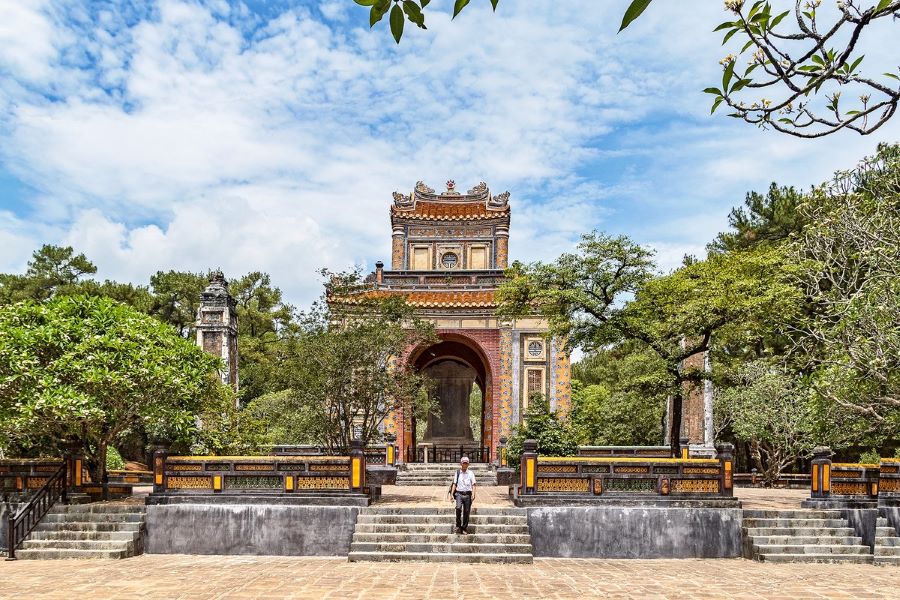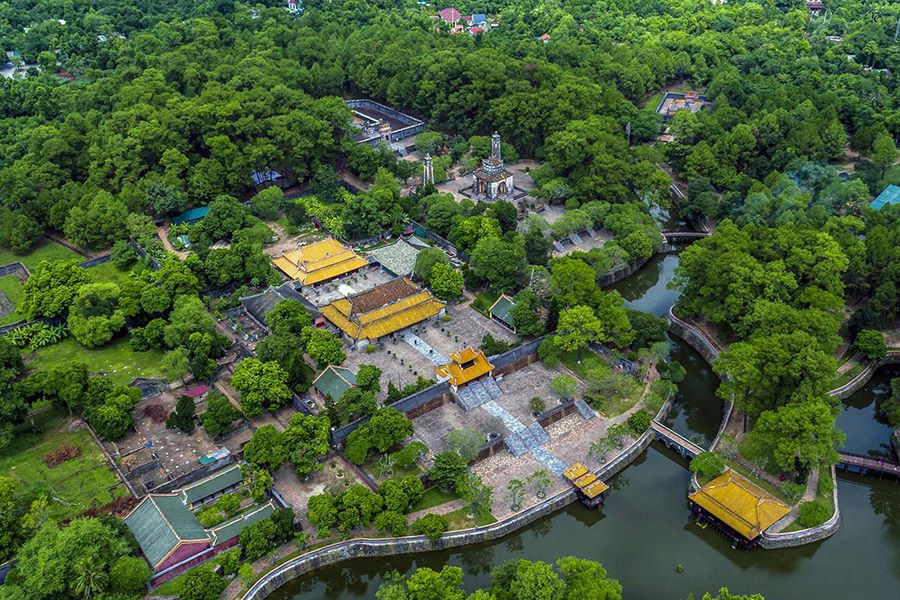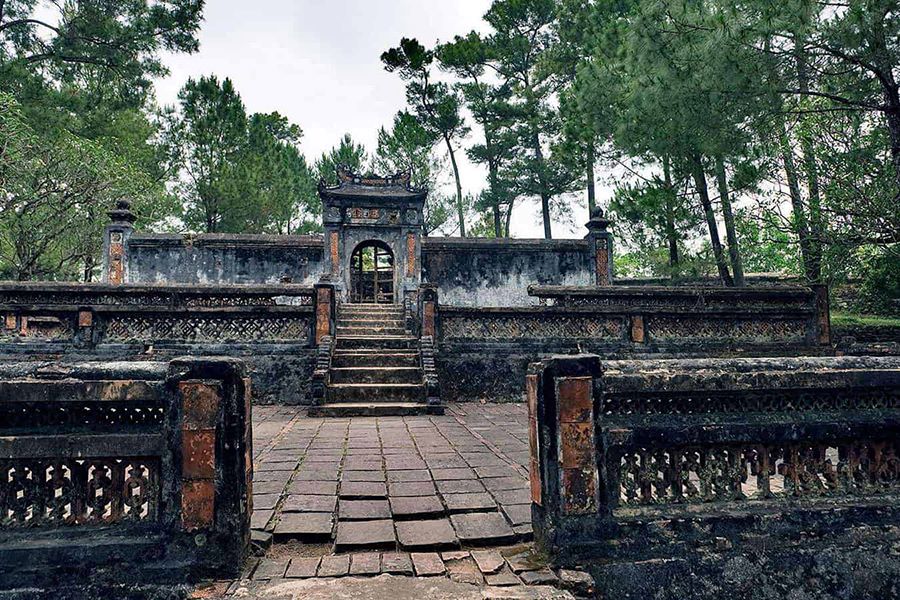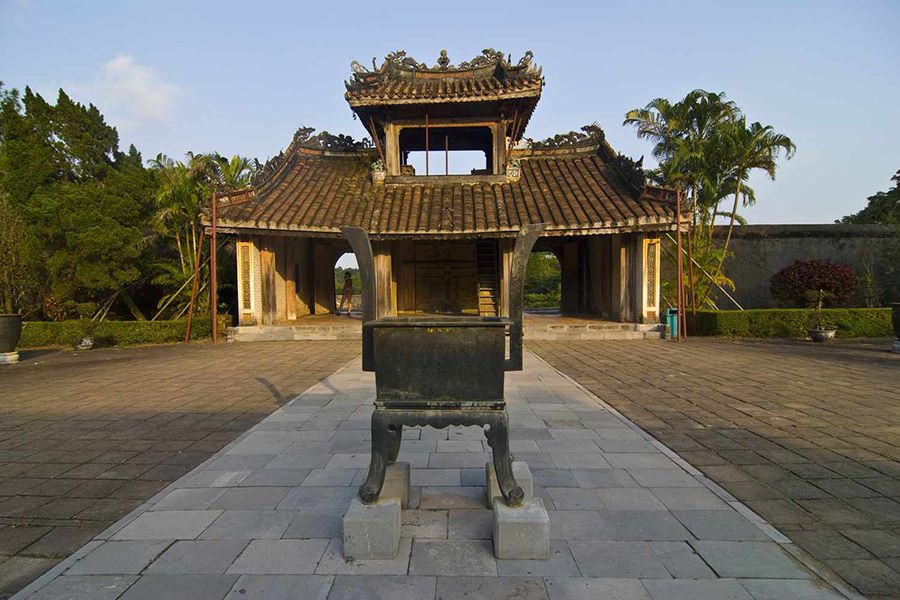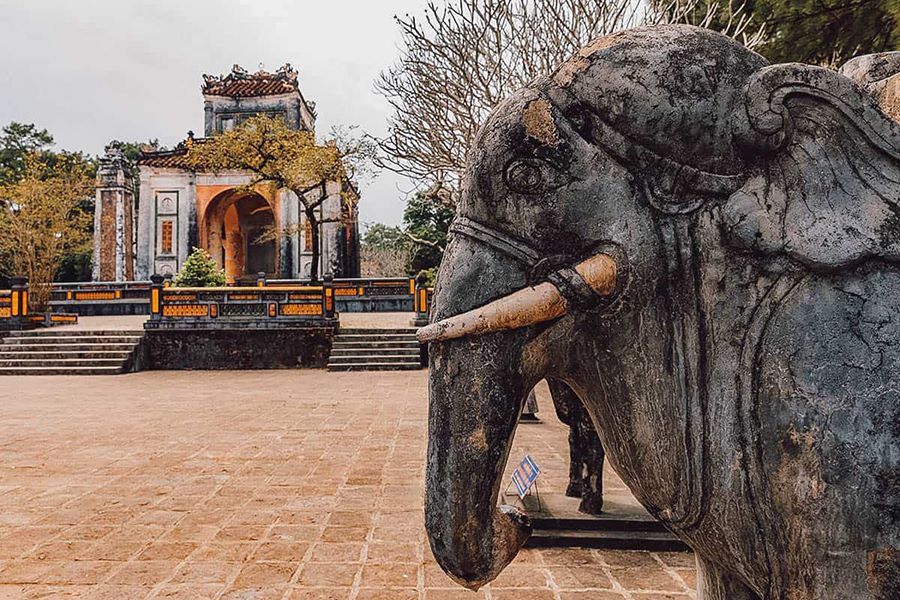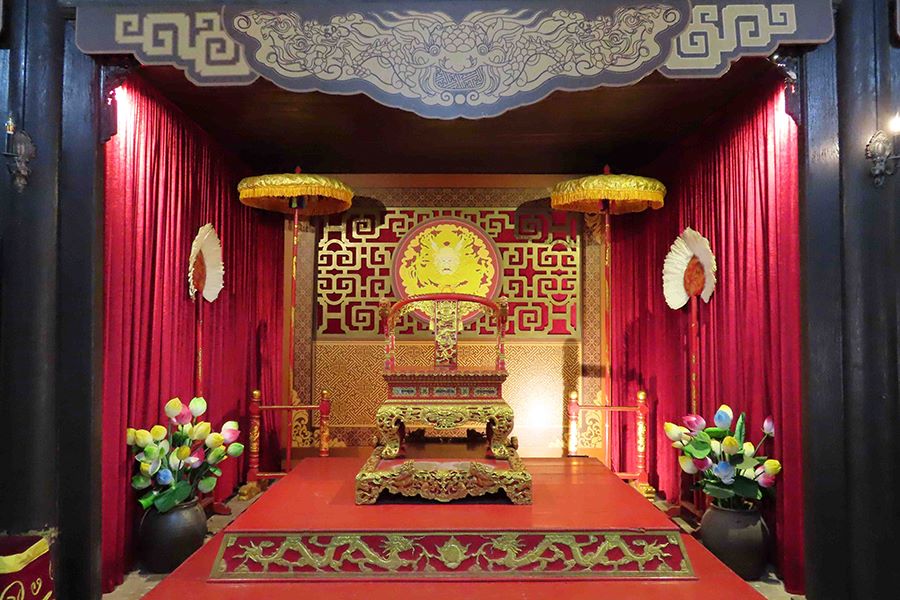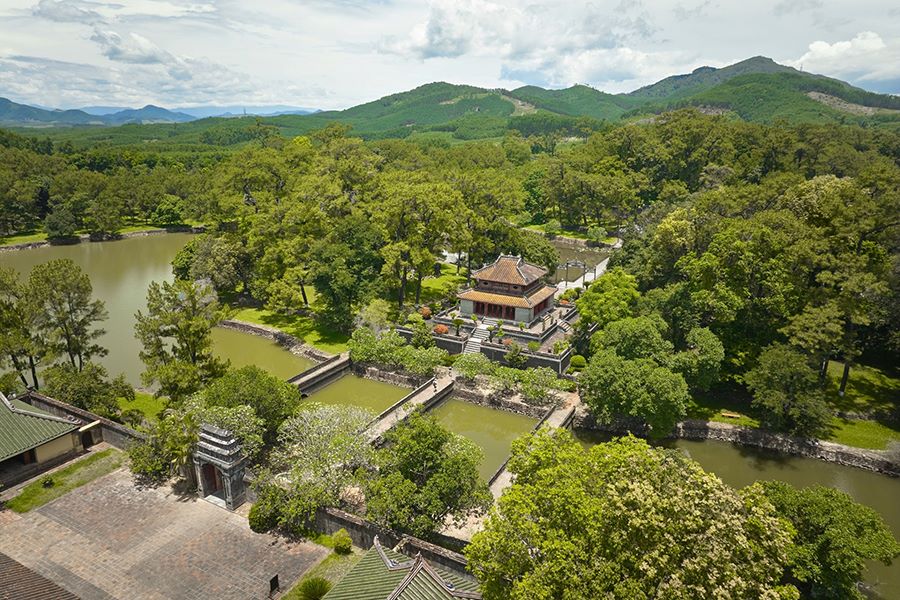Emperor Tu Duc had a strong affinity for art and poetry, which led him to build the picturesque tomb of Tu Duc. Until now, it is still the most romantic, imposing, and impressive of all royal mausoleums in Vietnam. Your trip with DMC Vietnam to the romantic city of Hue will not be complete without visiting the Tomb of Tu Duc. Nestled in a vast pine forest, this is the emperor’s final resting place, where all the mysteries of his life were buried with him. Let’s take a look at this enigmatic monument and see what lies beyond the gate.
About the tomb of Tu Duc – a famous architectural work in Hue
Tu Duc Tomb is only 8 kilometers away from the city center, making it a very convenient place to visit for a day trip. The tomb sits peacefully in a narrow valley, amidst an immense pine forest. From here, you can enjoy a stunning view of the famous Perfume River.
Tomb of Tu Duc reveals a lot about the emperor of the same name, a great intellectual, and a romantic soul. During his time, the tomb served as his hideaway, where he poured his heart and soul into poetry and took a break from national affairs.
History and structure of the Tomb of Tu Duc
As the son of King Thieu Tri, Tu Duc held the throne from 1847 to 1883. His reign, which spanned 35 years, marked the end of Vietnamese independence as he could not withstand the continuous attacks of French colonialists. Eventually, Tu Duc was forced to sign a contract, in which he gave the French control over three Mekong Delta provinces.
Under pressure, he also had to open Hanoi, Hai Phong, and the Red River area to international trade. Although he lost parts of the national territory, the Nguyen Dynasty’s fourth ruler was still honored by the Vietnamese people for his intellectual legacy, particularly his poems.
Tu Duc Emperor was caught between the country’s complex circumstances and his tragic private life when he was unable to have a descendant. Thus, to escape from his melancholy, he designed his palatial retreat – 12 hectares of architectural work that took over six years to build. It is the Tu Duc Tomb that we know today.
What are the prominent highlights of the tomb of Tu Duc complex?
Tomb of Tu Duc was originally named “Van Nien Co” (Palace of Eternity). To build the tomb, thousands of people had to work from dawn until midnight in poor conditions, which led to a rebellion.
After the rebellion, the court violently criticized the construction. Tu Duc renamed the tomb “Khiem Cung”, which meant “Palace of Modesty”. Nowadays, all the buildings in this complex are associated with the word “Khiem”, or “Modest” in English.
Despite its notorious history, Tu Duc Tomb Hue is still a sight to behold, consisting of five main parts:
Luu Khiem Lake and Tinh Khiem Islet
To access the tomb of Tu Duc, visitors will follow a brick-tiled walkway, which begins at Vu Khiem Gate and leads to Khiem Cung Gate. In front of Khiem Cung Gate is a placid lake called Luu Khiem. Originally a small stream, this man-made lake was believed by the late emperor to be a source of merit. During summer, the water is covered with pink shades of lotus, and there is no better place to take in the beauty of Vietnam’s national flower.
At the heart of the lake, you can see Tinh Khiem Islet. Tu Duc Emperor grew many rare species of flowers on this island, and some are still thriving to this day. Luu Khiem Lake is also home to Du Khiem and Xung Khiem pavilions, where the emperor indulged in refined pastimes like playing chess, enjoying tea, and reading books.
Hoa Khiem Palace
Walking through Khiem Cung Gate, the next thing you see is Hoa Khiem Palace. Once served as Tu Duc’s working space, this is now the place to worship the emperor and his wife. On the two sides are Phap Khiem Vu and Le Khiem Vu houses for the servants to rest.
Luong Khiem Temple
As a loving son, Tu Duc Emperor dedicated a special space to his mother, Empress Dowager Tu Du. The place is called Luong Khiem Temple. Right beside the temple is On Khiem Chamber, where the emperor’s possessions are kept.
Minh Khiem Ancient Theater
For many tourists, the true highlight of Tu Duc Tomb is a royal theater named Minh Khiem. Overlooking the placid lake, this architectural work is a reflection of Tu Duc’s poetic soul. All of its pillars were carved with intricate details, and the ceiling was painted with figures of the sun, moon, and stars.
It was here that the emperor enjoyed royal performances. Nowadays, to preserve the building, performances are shown in the Xung Khiem Pavilion instead. Still, if you have a thing for Vietnamese art, especially Hue court music, this ancient theater is worth a visit.
The Tomb Area
The first area, Bai Dinh, is right behind the worshiping area. It stands out with two rows of statues, which were believed to accompany the emperor on his journey to the afterlife.
After Bai Dinh, you will get to the Bi Dinh area, which features the emperor’s handwriting on a 20-ton stele. This is, by far, the largest stone stele in Vietnam. The life, achievements, and fall of Tu Duc are all chronicled on the plaque.
Visitors can reach the tomb of Emperor Tu Duc as they pass by a green lake called Tieu Khiem, whose shape resembles a crescent moon.
The main tomb area is constructed from three floors of stone. Whether the emperor’s body is truly here is unknown. Legend has it that when the emperor passed away, his grieving crew cruised down Luu Khiem Lake and laid him to rest in a secret spot.
After burying Tu Duc, all the servants were executed to protect his remains from grave robbers. And thus, the mystery of Tu Duc’s final resting place went down with them.
The significance and values of Tu Duc Tomb Hue
Although the whereabouts of Tu Duc’s body remain a secret, Tu Duc Tomb is still a must-see. It is the most graceful and well-preserved among the seven tombs of the Nguyen emperors. This world heritage site is a great example of traditional Hue architecture that lies in harmony with the surrounding nature.
Tu Duc Tomb is also the first landmark in Vietnam to appear in the 3D digitization museum of Google Arts & Culture. It stands as a historical witness, providing a glimpse into the life of an emperor who was blessed with talents but suffered many misfortunes.
Tu Duc Tomb lies in harmony with the surrounding natural landscape, creating magnificent scenery for visitors to behold. Come to the site on a clear morning, breathe in some fresh air, and you will forget that this is the eternal resting place of a historical figure, as you get lost in a paradise of poetry, art, and dreams.

